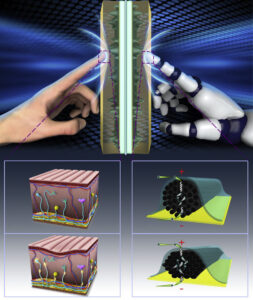Scientists in China created a bionic finger with a built-in haptic feedback system capable of detecting the external and the internal structure and hardness of materials, as a natural finger can feel the texture of skin and the outline of the bone underneath it.

According to a paper published about the development and reported in NewsAM, existing artificial tactile sensors can only recognize and distinguish between external shapes, surface texture, and material strength, but are unable to perceive details under the surface of materials, which usually require optical technologies that come with drawbacks.
The bionic finger is actually a simulation of a haptic feedback system, according to the study. A metal cylinder placed on the tip of the finger serves as a contact limb, and carbon fibers serve as mechanical tactile receptors that are connected to a signal processing module.
The finger scans the surface of the target object by periodically applying pressure to the surface. This pressure compresses the carbon fibers, and the degree of compression of the material gives information about its relative hardness or softness. This, as well as information about which part of the surface it was recorded on, is sent to a computer, which converts the data into a 3D map.
The authors tested the finger on a variety of complex objects, including its ability to detect and map the letter A directly under a layer of soft silicone, as well as other abstract shapes. The finger could distinguish between the hard and soft inner material and the soft silicone outer coating.
The researchers also created a 3D-printed physical model of human tissue, consisting of three layers of hard polymer to represent a skeleton and an outer layer of soft silicone. The bionic finger scanned and successfully reproduced a 3D profile of the model’s tissue structure, including the location of a simulated blood vessel under the “muscle” layer.
In addition, the scientists used the bionic finger to create a map of the internal components of a malfunctioning electronic device. The finger pinpointed exactly where the circuit was disconnected and found the incorrectly drilled hole without penetrating the device from the outer layer.
The researchers plan to improve the finger’s capabilities so that it can detect various complex surfaces, identify any material, and reproduce its structure as clearly and error-free as possible.
The open-access study “A smart bionic finger for subsurface tactile tomography,” was published in Cell Reports Physical Science and includes a video of the device in action.




